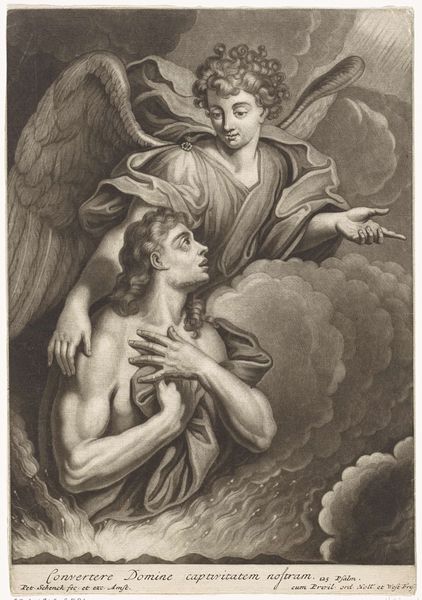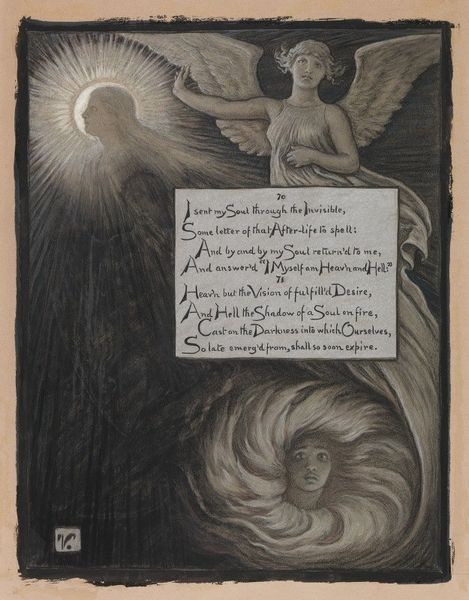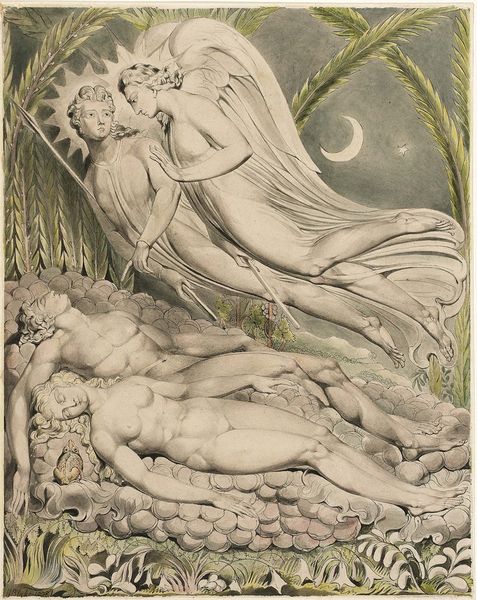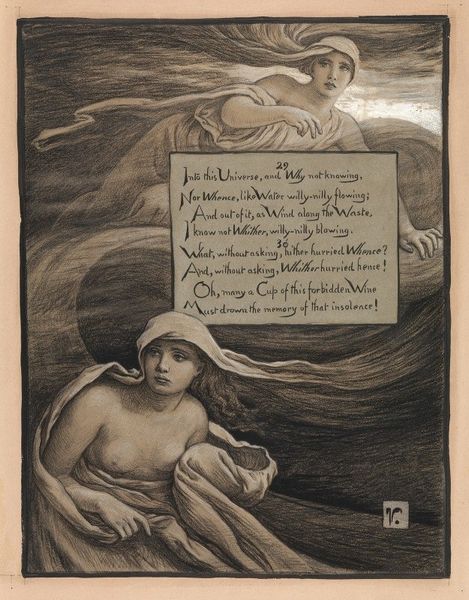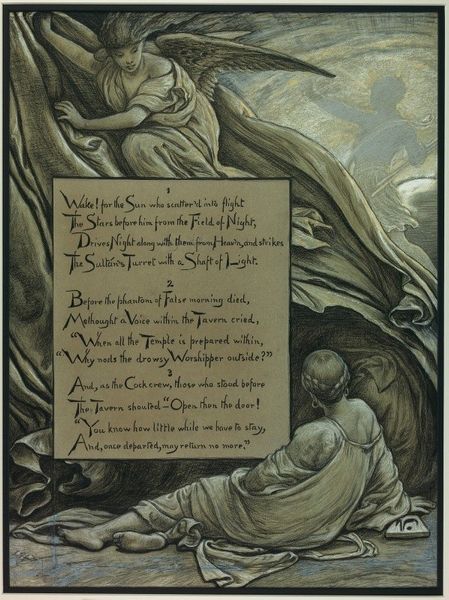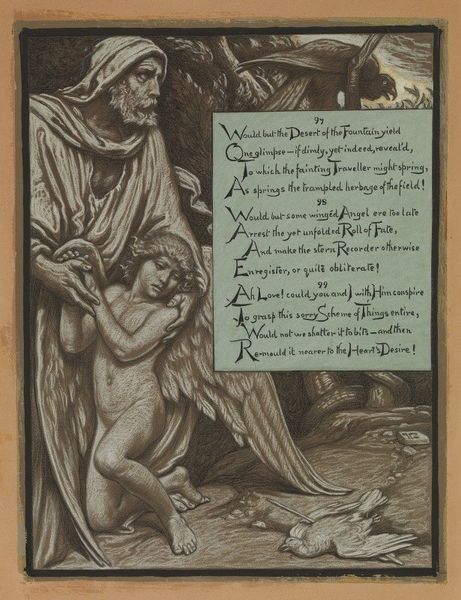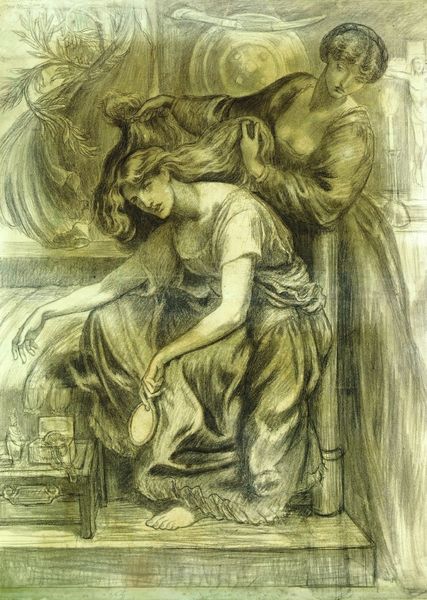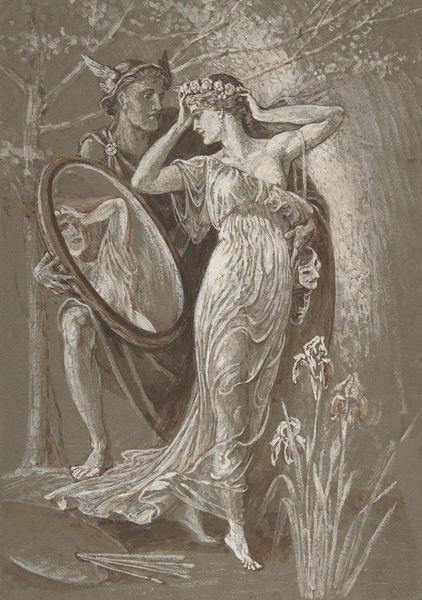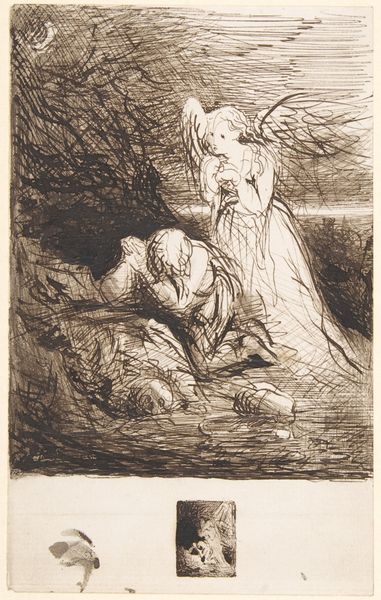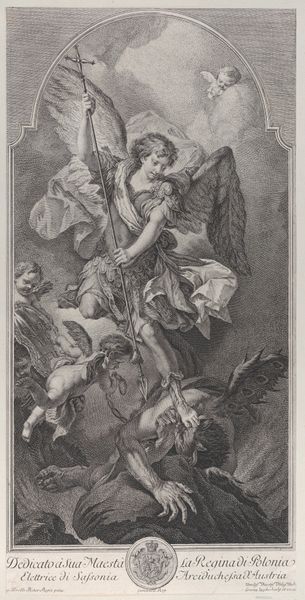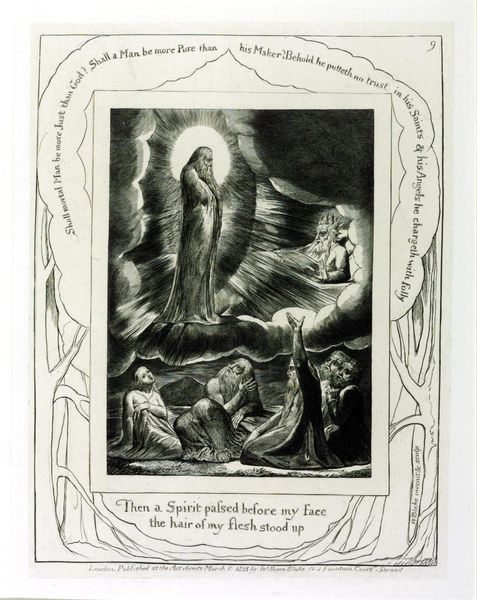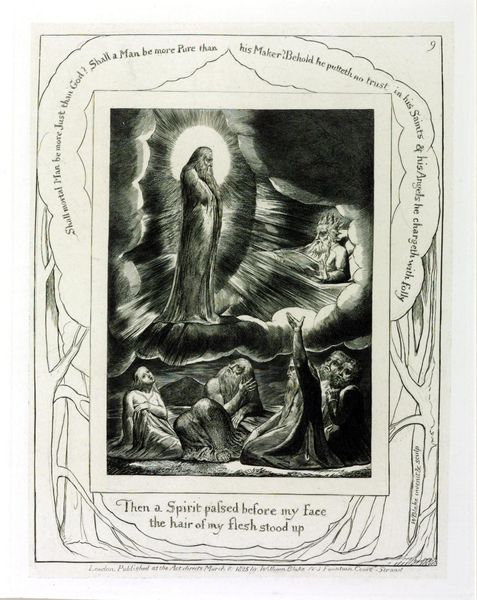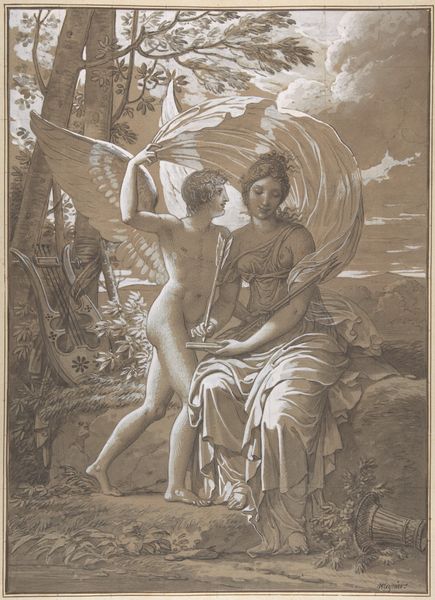
drawing, pencil
#
portrait
#
drawing
#
narrative-art
#
pencil sketch
#
figuration
#
pencil drawing
#
pencil
#
symbolism
#
portrait drawing
#
academic-art
Copyright: Public Domain: Artvee
Curator: "The Cup of Death," dating from around 1883-1884, is a compelling pencil drawing by Elihu Vedder. The visual weight immediately struck me—a remarkable command of tone creating depth within such a constrained palette. Editor: It has a definite atmosphere of sorrow, wouldn’t you say? The drooping posture of the figure accepting the cup, the shadowy figure presenting it – they resonate with cultural narratives surrounding mortality. Curator: Indeed. The composition invites immediate semiotic interpretation, particularly regarding the "angel" figure. Though winged, they lack any luminous halo, conveying an ambiguity around the gesture of giving this drink. Is it malevolent, or a form of bleak comfort? Editor: Consider the source text incorporated directly within the image: "So when the Angel of the darker Drink… invite your Soul forth to your Lips to quaff." The verses shape a clear symbolic narrative—Vedder seems deeply concerned with concepts of destiny and surrender to the inevitable. Curator: Vedder's employment of classical Academic artistic conventions underscores these themes, no? He deliberately invokes certain aesthetic languages to emphasize themes of morality that appear so commonly throughout his oeuvre. Editor: That contrast between classical aesthetics and morbid symbolism is precisely where its power resides. We are drawn to beautiful forms representing unsettling realities, tapping into a deep collective awareness. It reminds one of symbolist poetry, enacting themes through complex layering of metaphor. Curator: In a sense, it encapsulates how potent the human form is within visual language. Even through minimal artistic means, profound themes manifest if composition and the rendering of tone are so masterfully observed. Editor: I concur. Seeing such heavy meaning distilled with delicate pencils only underscores how artists reveal complex emotions with fundamental formal choices, a dialogue that echoes throughout history.
Comments
No comments
Be the first to comment and join the conversation on the ultimate creative platform.
